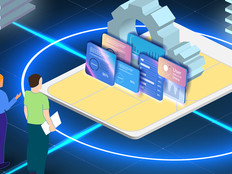Visual Technologies Help Providers, Consumers Keep an Eye on the Future
I'm always amazed at the continued growth and innovation of the healthcare and senior care technology industries. The design of consumer products, in particular, stands out to me, with individuals empowered to take more control of their care and clinicians taking advantage of greater access to information, training and collaboration.
One area where such efforts are growing gradually more visible (pun intended) is eyewear. From Samsung's recently launched Relúmĭno glasses and Google Glass to glasses being tested at the University of Southern California Center for Body Computing, developers and researchers continue to see potential both for consumers and medical professionals.
How are these and other tools making headway?
Functionality Meets Fashion with New Smart Glasses
At the 2017 Mobile World Congress in Barcelona, Spain, Samsung unveiled Relúmĭno, an app designed to take advantage of virtual reality by pairing with Gear VR to help people with visual impairments perform tasks such as reading, viewing images and watching videos. According to a New Atlas article, the Relúmĭno app also helps people with blind spots in their field of vision by showing "the obscured part of the image somewhere else," and by using an Amsler grid chart to straighten out lines that appear wavy for sufferers of metamorphopsia.
At CES 2018 in Las Vegas in January, Samsung unveiled its own glasses to go along with the app, with the idea that such technology can be more comfortable and discreet. According to Samsung, "the glasses work in conjunction with a smartphone … The smartphone processes images from videos projected through the camera of the glasses, and the processed images are floated into the display of the Relúmĭno glasses to help the wearer see things better."
VSP Global's Level smart glasses, launched last month, also look to combine "traditional eyewear craftsmanship" with user performance. The frames, tested by USC researchers, are embedded with technology that allows wearers to track their steps and calories burned, as well as distance and total activity time.
While it may seem like a small step, marrying functionality and fashion significantly increases the chances that consumers will adopt the technology.
Google Glass Breaking Through in Healthcare
Google Glass has been part of this conversation for five years, particularly regarding clinicians' use. Publicly announced in 2012 and released in 2013, the specs have been used for everything from assisting surgeons in the operating room to allowing physicians to more quickly and easily view and transcribe electronic health records.
At HIMSS 2018 in Las Vegas, for instance, Northern California-based Sutter Health announced it is working with Augmedix, which provides a technology-enabled documentation service for health systems and doctors, to take advantage of Google Cloud. Sutter plans to add a machine learning tool to help physicians by triaging inbox messages from patients, and future plans include implementing more Google Cloud-enabled AI and machine learning modules to improve scribing services, according to the announcement.
Additionally, Glass is being deployed to help individuals who are blind or have low vision navigate their surroundings.
I'm excited to see how this technology and these trends mature in the coming year to help both consumers and healthcare providers.
This article is part of HealthTech’s MonITor blog series. Please join the discussion on Twitter by using #WellnessIT.










